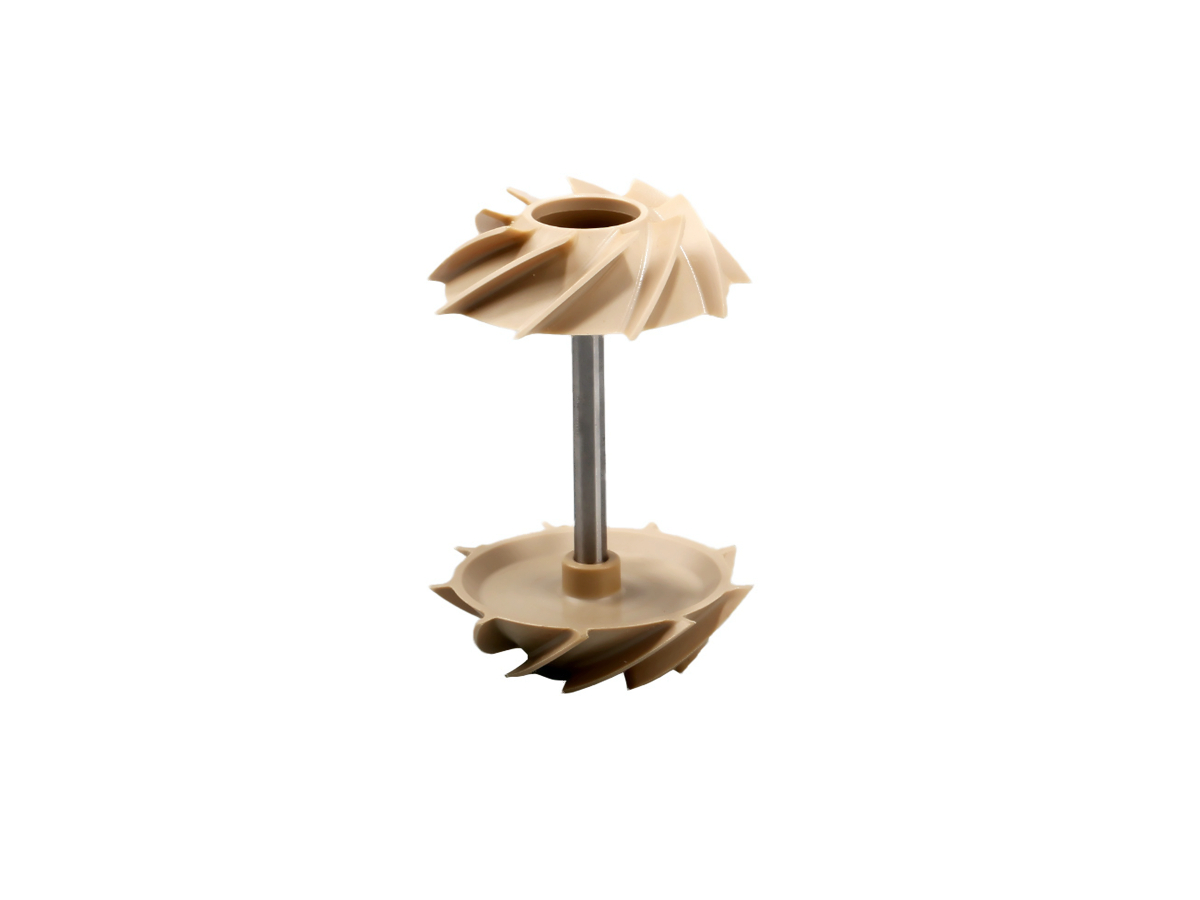High-Temperature CNC Machining of PEEK for Aerospace and Medical Applications
Introduction to CNC Machined PEEK for Demanding Aerospace and Medical Environments
Industries like aerospace and medical device manufacturing require materials capable of withstanding extreme temperatures, rigorous sterilization processes, and demanding mechanical stresses. Polyether ether ketone (PEEK) stands out for its excellent thermal stability (operating temperatures up to 260°C), high mechanical strength, chemical inertness, and biocompatibility. CNC machined PEEK components commonly include aerospace fasteners, high-temperature insulators, surgical tools, orthopedic implants, and medical connectors.
Employing precise CNC machining services, manufacturers can produce intricate PEEK components with tight tolerances, critical dimensions, and excellent surface finishes, ideal for high-performance applications.
PEEK Material Performance Comparison
Material | Tensile Strength (MPa) | Continuous Service Temp (°C) | Chemical Resistance | Typical Applications | Advantage |
|---|---|---|---|---|---|
90-100 | Up to 260°C | Outstanding (resistant to acids, bases, solvents) | Implants, aerospace components | High strength, thermal stability | |
90-105 | Up to 170°C | Excellent | Aerospace connectors, electrical insulators | Good strength, lower cost | |
20-30 | Up to 260°C | Exceptional | Seals, gaskets | Superior chemical resistance, lower mechanical strength | |
120-140 | Up to 250°C | Excellent | High-load aerospace parts | Extremely high mechanical strength |
Material Selection Strategy for CNC Machined PEEK Components
Selecting PEEK for high-temperature aerospace and medical applications involves careful evaluation of thermal performance, mechanical strength, and biocompatibility:
Aerospace structural components, connectors, and insulators requiring stable mechanical performance at high temperatures (up to 260°C) and chemical resistance benefit greatly from PEEK due to its exceptional combination of properties.
Surgical instruments, implants, and sterilizable medical connectors utilize PEEK for its biocompatibility (ISO 10993 compliant), radiation resistance, and excellent strength-to-weight ratio.
For applications with moderate thermal demands (up to 170°C), PEI (Ultem) offers a suitable, cost-effective alternative.
PTFE is preferable for components requiring extreme chemical inertness but limited mechanical strength.
CNC Machining Processes for High-Temperature PEEK Components
CNC Machining Process | Dimensional Accuracy (mm) | Surface Roughness (Ra μm) | Typical Applications | Key Advantages |
|---|---|---|---|---|
±0.01-0.02 | 0.4-1.2 | Aerospace fittings, complex implants | High precision, complex geometries | |
±0.005-0.01 | 0.2-0.8 | Surgical tools, precision aerospace components | Superior accuracy, surface finish | |
±0.01-0.05 | 0.4-1.6 | Connectors, cylindrical implants | High rotational precision | |
±0.02-0.05 | 1.6-3.2 | Aerospace fasteners, medical devices | Precise hole positioning |
CNC Process Selection Strategy for PEEK Components
Selecting appropriate CNC machining processes for PEEK components depends on complexity, dimensional precision, and functional requirements:
Complex implants and aerospace fittings demanding ultra-high precision (±0.005–0.01 mm) and fine surface finishes (Ra ≤0.8 µm) require advanced 5 Axis CNC Milling.
Intricate medical instruments and aerospace components needing precise geometries (±0.01–0.02 mm) and moderate surface finishes (Ra 0.4–1.2 µm) benefit from Precision Multi-Axis CNC Machining.
Cylindrical medical implants, connectors, and rotating aerospace components achieve excellent rotational accuracy (±0.01 mm) through CNC Turning.
Aerospace fasteners and precise medical components involving accurately positioned holes rely on CNC Drilling.
Surface Treatment Performance Comparison for CNC Machined PEEK Components
Treatment Method | Surface Roughness (Ra μm) | Wear Resistance | Corrosion Resistance | Hardness (Shore D) | Typical Applications | Key Features |
|---|---|---|---|---|---|---|
0.2-0.6 | Moderate (ASTM D4060) | Excellent (ASTM B117 >500 hrs) | 85-90 | Medical implants, surgical tools | Enhanced smoothness, biocompatibility | |
0.2-0.5 | High (HV1500-2500) | Exceptional (ASTM B117 >1000 hrs) | 90-95 | Aerospace bearings, high-wear components | Improved hardness, wear resistance | |
0.4-1.0 | Moderate-High (ASTM D4060) | Excellent (ASTM B117 >500 hrs) | 80-90 | Surgical instruments, connectors | Improved wettability, adhesion | |
0.4-1.0 | Moderate-High | Excellent (ASTM B117 >500 hrs) | 70-75 | Hybrid aerospace parts, medical fixtures | Enhanced corrosion resistance, durability |
Surface Treatment Selection for CNC Machined PEEK Components
Choosing suitable surface treatments involves enhancing biocompatibility, corrosion resistance, and wear performance:
Medical implants and surgical instruments benefit from Vapor Polishing for improved biocompatibility, cleanliness, and a smooth finish (Ra ≤0.6 µm).
Aerospace components, especially those subjected to heavy wear, friction, or corrosive environments, utilize PVD Coating for superior hardness (HV1500-2500) and extended durability.
Plasma Surface Modification enhances surface wettability, promoting stronger bonding in medical connectors and aerospace adhesive joints.
Hybrid aerospace components with metallic inserts benefit from Anodizing, enhancing overall corrosion resistance and mechanical durability.
Typical Prototyping Methods for PEEK Components
CNC Machining Prototyping: Rapid, precise prototyping to validate high-performance aerospace and medical component designs.
Material Extrusion 3D Printing: Suitable for preliminary evaluations of complex geometries and initial performance testing.
Quality Assurance Procedures
Precision Dimensional Inspection (CMM): Ensuring accuracy within ±0.005–0.01 mm.
Surface Quality Assessment (Profilometry): Surface roughness verification for medical-grade applications.
Thermal Stability and Mechanical Testing (ASTM standards): Tensile strength (ASTM D638) and heat resistance verification.
Non-destructive Testing (Ultrasonic & Radiographic): Ensuring component integrity.
ISO 13485 and AS9100 Compliance: Full documentation for traceability and quality assurance.
Industry Applications
Aerospace insulators, connectors, and fasteners.
Surgical instruments and orthopedic implants.
High-performance medical device components.
Related FAQs:
Why is PEEK preferred for aerospace and medical applications?
What CNC machining techniques are best for high-temperature plastics?
How do surface treatments enhance PEEK performance?
What quality standards apply to CNC machined PEEK components?
What applications commonly utilize CNC machined PEEK parts?

